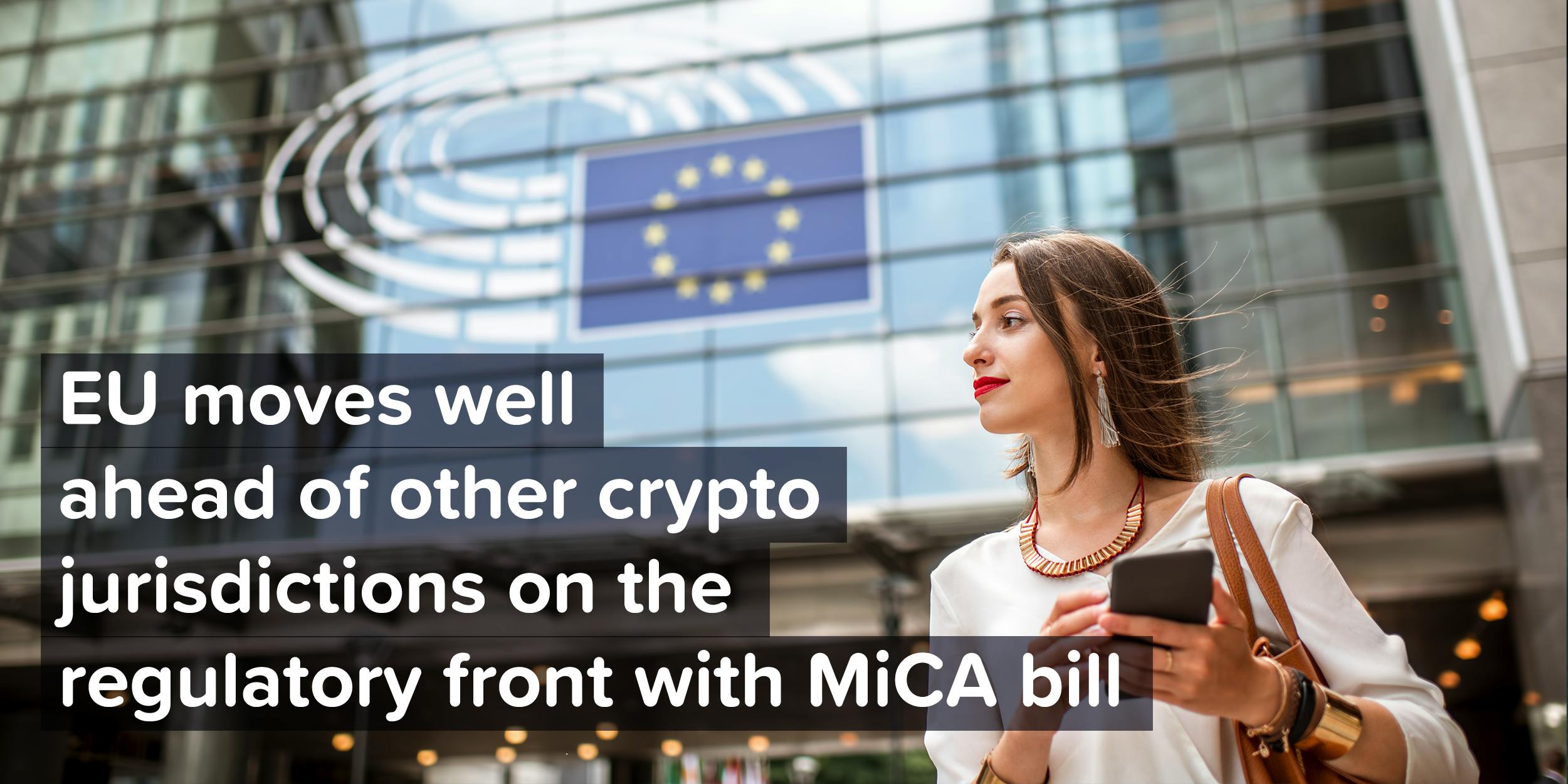EU moves well ahead of other crypto jurisdictions on the regulatory front with MiCA bill

- Date
- 27/07/2023
- Written by
- Lykke
- Share
- Leave your opinion (0 reviews)
The Markets in Crypto Assets (MiCA) regulation put forward by the European Commission as part of its digital finance strategy in late 2020 has been adopted by the European Parliament. The bill, the most comprehensive regulatory framework for crypto assets adopted to date, is set to enter into force across the EU by the middle of 2024.
MiCA’s aim is to ensure legal certainty for the crypto assets covered by the regulation. Other objectives include embracing innovation and fair competition, protecting consumers and investors as well as ensuring financial stability with the inclusion of safeguard.
MiCA will give the EU a competitive advantage given the same binding requirements will apply to all 27 EU members. This means that once a crypto issuer has been granted a MiCA license in one EU member, it will be able to offer its services throughout the EU’s crypto market. This is expected to favor MiCA-compliant crypto actors. They are likely to gain market shares on the back of players based in less regulated jurisdictions such as the US and UK.
Institutional clients operating within the EU are also expected to start adopting crypto assets to a greater extent given the regulatory uncertainties will be lifted, another factor benefiting the EU’s crypto market.
Assets covered
Which crypto assets will MiCA cover? Those not covered by existing regulations, so e-money tokens (stablecoins backed by a single currency), asset-referenced tokens (these includes stablecoins backed by one or several currencies, or commodities) as well as utility tokens and cryptocurrencies such as Bitcoin and Ethereum.
MiCA will apply to both individuals and legal entities that are engaged in the issuance, offer to the public, and admission to trading of crypto assets or that provide services related to crypto assets.
Crypto transactions above 1,000 euros will be covered by MiCA. The rules will not apply to person-to-person transfers conducted without a provider or among providers acting on their own behalf.
Public register of non-compliant actors to be set up
To counter the risk of money laundering, the European Securities and Markets Authority (ESMA) will be requested to set up a public register for non-compliant crypto assets service providers that operate in the European Union without proper authorisation.
To cut the high carbon footprint of cryptocurrencies, larger service providers will have to disclose their energy use.
Other jurisdictions likely to follow suit
The European Parliament adopted the MiCA regulation on April 20. The bill is set to enter into force across the EU by the middle of 2024. The EU now hopes that other countries will adopt these rules. Ukraine has already announced it plans to do so.
The MiCA regulation is both a challenge and an opportunity for Switzerland. On the one hand, Switzerland loses its first mover advantage and has to compete with 27 countries that all try to capture a share of the emerging crypto business. On the other hand, there is one area where Switzerland is far ahead of its competitors: The adoption of its Distributed Ledger Technology (DLT) Framework Act in 2021 makes it possible to tokenize any asset anywhere in the world. This is unprecedented in Europe and offers great opportunities for innovative solutions for Switzerland's expanding crypto industry.